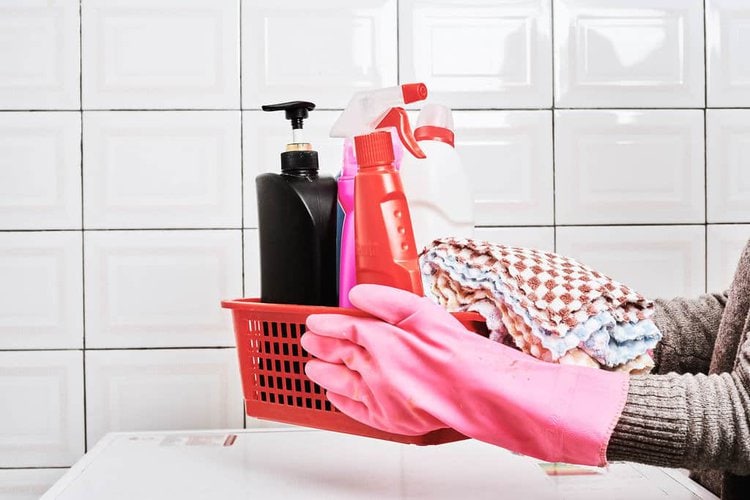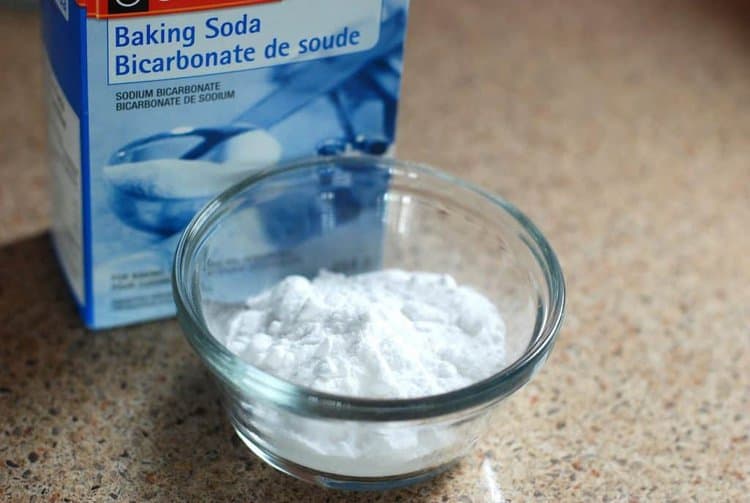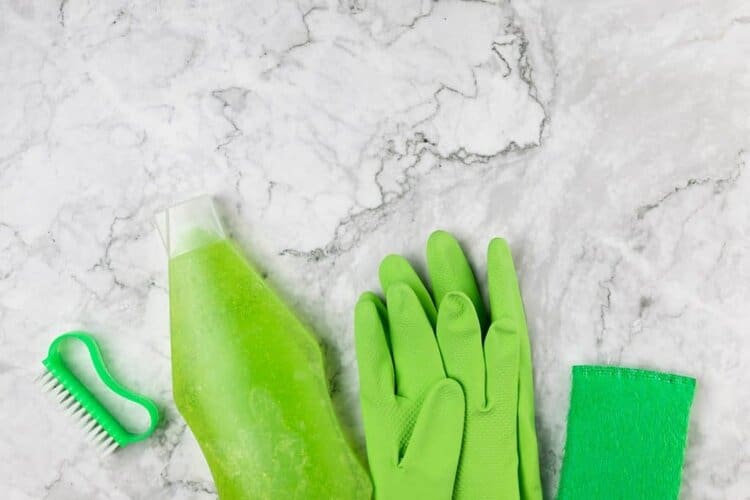To remove water stains from marble, carefully rub the stain with a very fine steel wool pad, then clean it with gentle dish soap and a soft cloth.
There is little in life as sad as a beautiful marble countertop marred by water stains. Fortunately, that pesky ring on your marble doesn’t need to stay there forever.
There are multiple solutions to remove water stains from marble, and you probably already have most of the ingredients right in your home!
How to Remove Water Stains from Marble with Soap

What You’ll Need
- 0000 steel wool
- Mild dish soap
- Soft sponge
- Soft and absorbent cloth
Steps to Follow
- Prep the area of the stain before you begin cleaning. With a very fine steel wool pad, gently buff the site of the stain. This will help remove the water ring.
Note: It might sound risky to rub steel wool on your marble, but a 0000 steel wool is super fine, so it will be quite gentle.
- Fill a bucket with 1 gallon of warm water and add a teaspoon of mild dish soap. Mix the soap in well.
- Using circular motions, use a soft sponge to rub the soapy mixture into the stain gently.
- Continue this motion until the rest of the stain disappears, then dry the area with a soft cloth.
How to Remove Water Stains from Marble with Baking Soda

Sometimes a water stain might be too stubborn for a soap-based solution.
For more fighting power, you can use baking soda. It has abrasive properties but won’t tear up your counter or table. Since it’s a natural product, you can feel good about using it.
What You’ll Need
- Baking Soda
- Soft bristle brush
- Plastic wrap
- Soft and absorbent cloth
Steps to Follow
- Make a paste with the baking soda by mixing some with a small amount of water. Keep adding water until you’ve formed a paste.
- With a soft bristle brush, rub some of the mixture onto the stain using circular motions.
- Leave the paste on the stain, and cover with plastic wrap.
- Leave in place for 24 hours, then remove the plastic covering.
- Wipe the baking soda mixture away with a soft cloth, and cleanse the area.
How to Remove Water Stains from Marble with Hydrogen Peroxide
For another natural stain solution, try this mixture of cream of tartar and hydrogen peroxide for a very mild bleaching process. It’s excellent for removing hard water stains on most surfaces, not just marble.
What You’ll Need
- Cream of tartar
- Hydrogen peroxide
- Soft and absorbent cloth
Steps to Follow
- Generously pour some cream of tartar onto the stain.
- Slowly add hydrogen peroxide, mixing it with the cream of tartar as you go until you’ve formed a paste.
- Take a cloth and rub the paste into the stain using a circular motion.
- Clean it off after allowing the solution to sit for at least half an hour.
Deep Set Water Stains on Marble May Require Some Scraping
Unfortunately, sometimes a water stain is really set in and can be pretty challenging to remove. With a bit of finesse and a scraper, there’s still hope to remove that pesky stain.
You can use a hard scraper or a razor blade to very gently begin to chip away at the marks on your marble. The spots are deposits of minerals left behind from the hard water, so it is possible to remove them, even if it takes some muscle.
Work extremely carefully and slowly so that you don’t damage the marble.
Once you’ve scraped off most of the markings, gently scrub the baking soda or hydrogen peroxide mixture into the marble to remove the remaining stain.
Perform Routine Maintenance to Prevent Water Stains
You may not be able to prevent all damage to your marble completely, but you can do some daily upkeep to hold off most stains and damage.
Most staining to marble comes from daily water contact. So each day, be sure to wipe down your marble surface with distilled water and a soft cloth.
But don’t consider the job done just yet!
Drying the marble surface is the essential part of preventing water stains. Keep a soft, dry cloth on hand to regularly wipe down your marble countertop or table.
Seal Your Marble Surface
It’s imperative to seal your marble surface. You can pick up reliable sealants from most hardware stores or ask your counter installer if they have a product they prefer.
It won’t prevent damage to your marble, but it can be effective in protecting from hard water stains. The sealant will help cover the pores on the stone’s surface, so it can’t absorb anything.
It acts as a barrier that prevents anything it comes in contact with from turning into a stain. You will need to re-seal your marble a couple of times each year, as it does wear off.
The good news is that it’s incredibly simple to do yourself. You won’t need to go through the hassle of hiring a professional each time.
Tips to Protect Your Marble from Water Stains

Be sure to clean spills immediately. Allowing water to remain on a marble surface is hazardous. That’s when the minerals and limestone can begin to sink to the surface.
A quick wiping up can go a long way.
If you’ve spilled a dark liquid, blot it instead of rubbing it. You want to pull the liquid up and away from the marble, not allow it to sink further in. After absorbing the spill, clean it with mild dish soap and water.
Don’t forget to dry the area after!
Want to know a time-honored secret to completely preventing water rings? Use coasters under your drinks! Sure, they may seem unfashionable and something your grandmother might have scolded you for, but they are super practical.
FAQs on How to Remove Water Stains From Marble
Why does water stain marble?
Marble is a porous stone, and water has minerals in it. The minerals can become lodged in the pores of the marble, causing discoloration.
What cleaners should I avoid on marble?
Avoid acidic cleaners, such as white vinegar, bleach, and ammonia. The acid eats into the marble, causing irreversible damage.
What’s the easiest way to handle water stains on marble?
If you don’t want to play around with home remedies for removing water stains, you may consider purchasing a commercial stone cleaner. You use it similar to how you apply the home remedies.